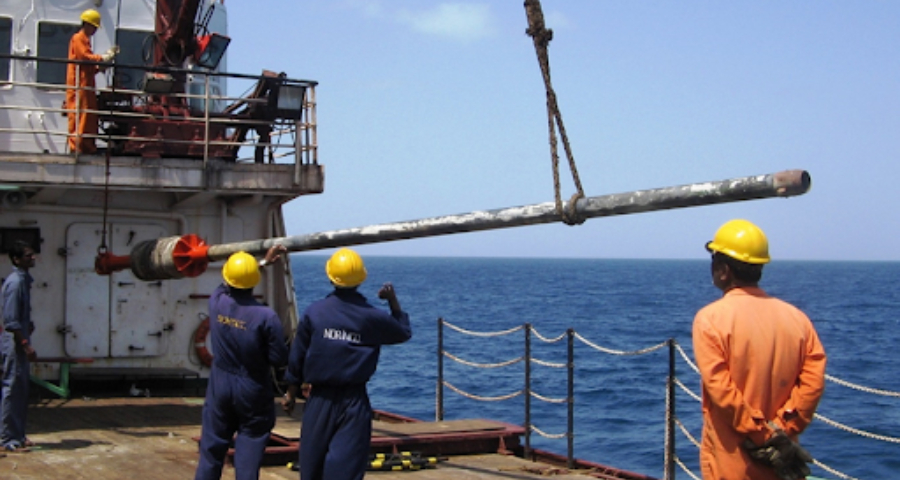
The Gravity Corer allows researchers to sample and study sediment layers at the bottom of lakes or oceans. It got its name because gravity carries it to the bottom of the water body. Recovering sediment cores allows scientists to see the presence or absence of specific fossils in the mud that may indicate climate patterns at times in the past, such as during the ice ages.
Scientists can then use this information to improve understanding of the climate system and predict patterns and events in the future. Cores capture a time capsule that, in some cases, can span the past hundreds of thousands and even millions of years. Because sedimentation rates in some areas are quite slow, even a smaller corer a few meters in length may represent thousands of years of particles. These particles are a historical record of condition in the water column and in the atmosphere and can be used to reconstruct past conditions on Earth.